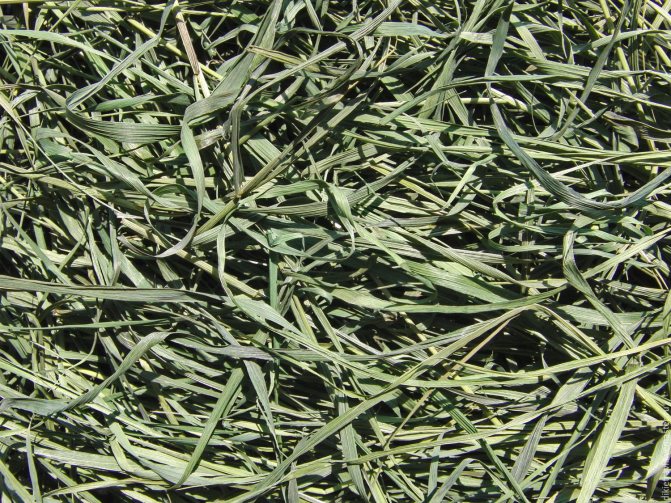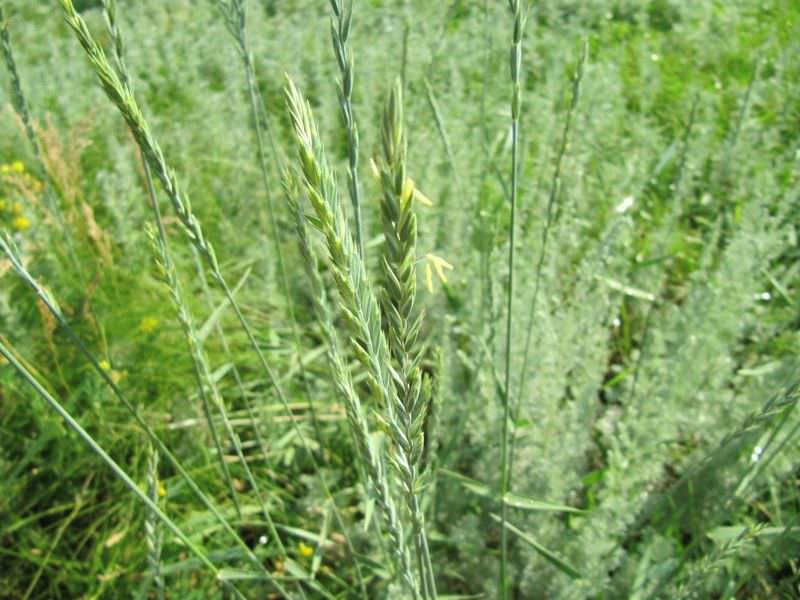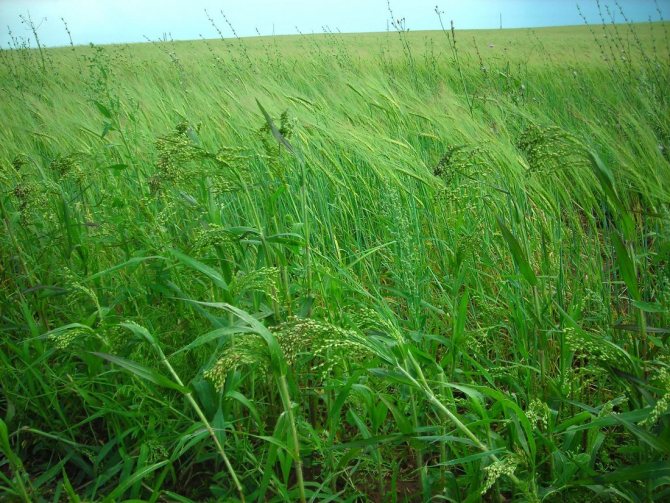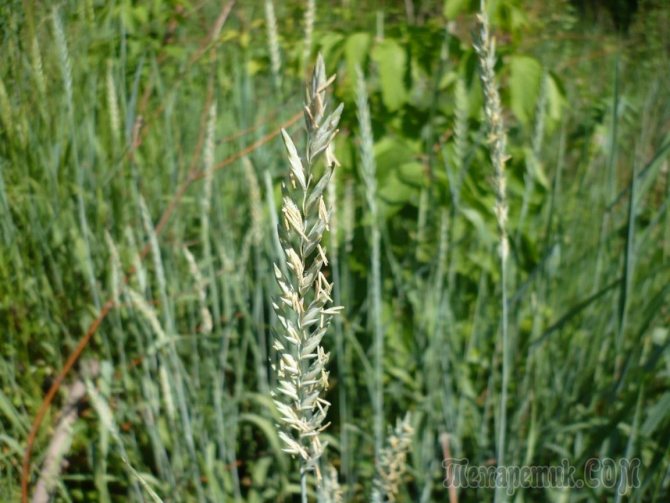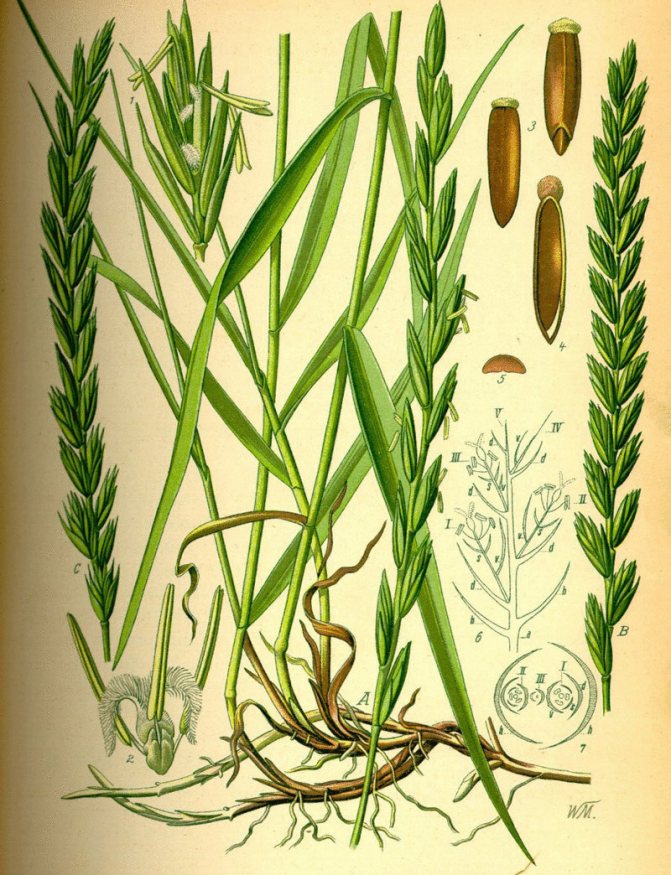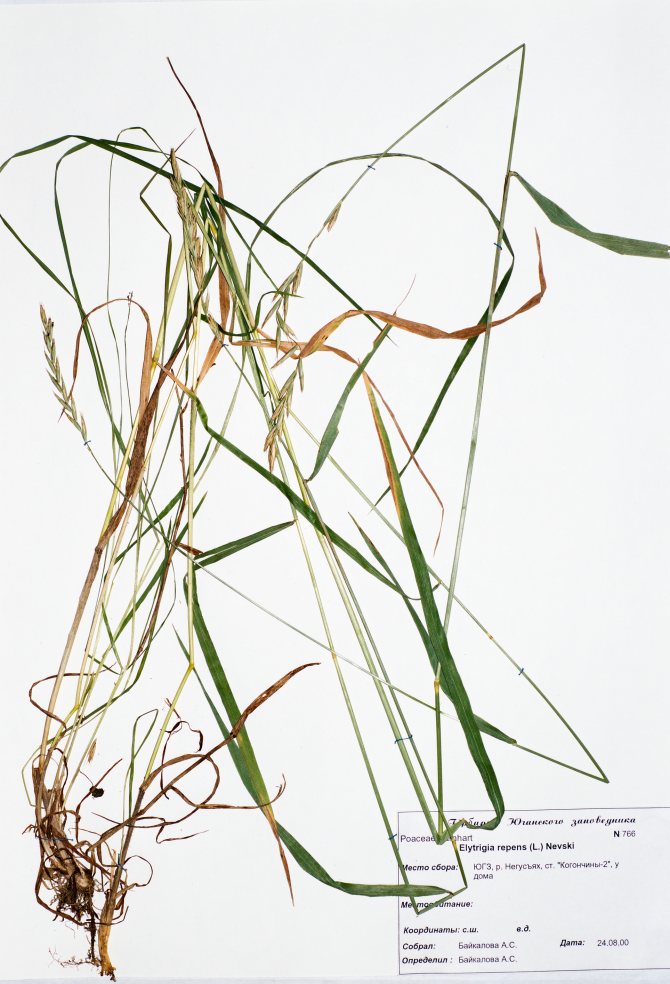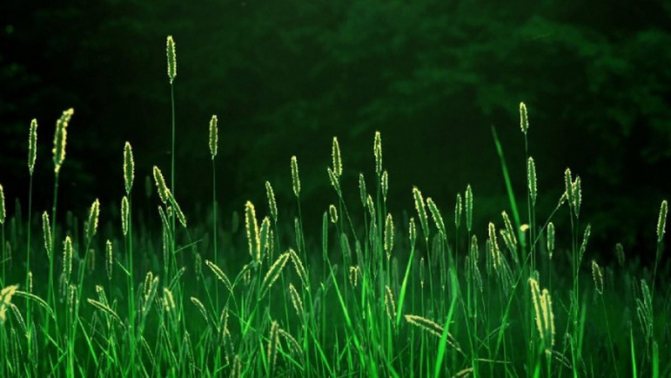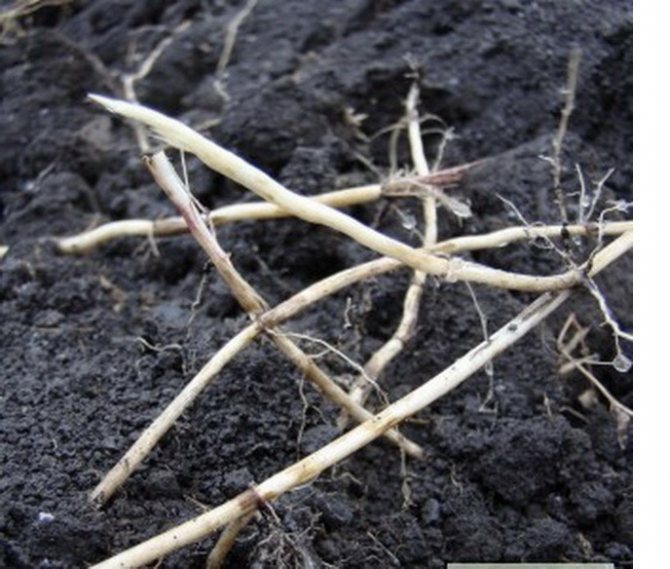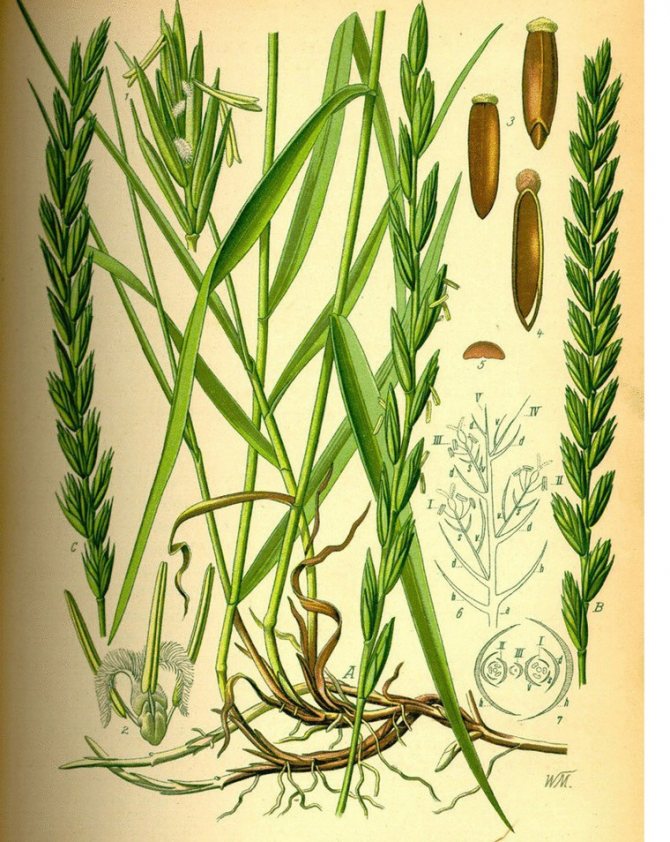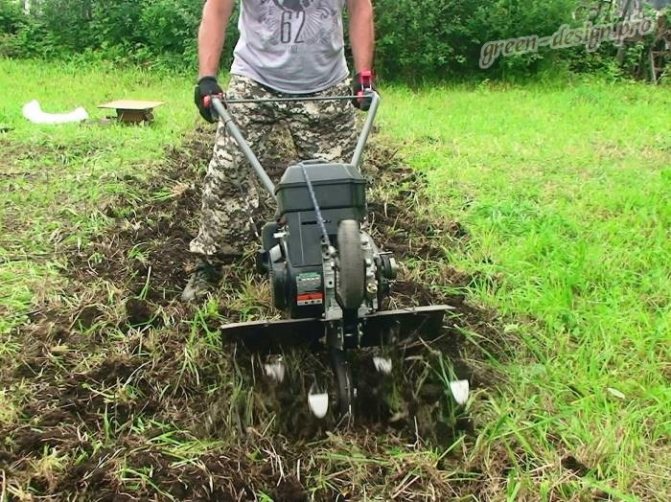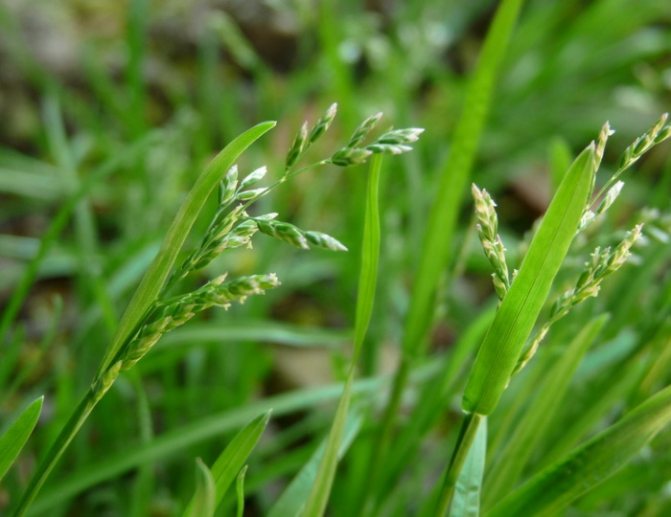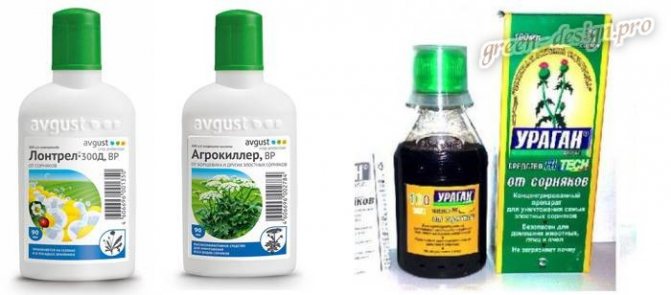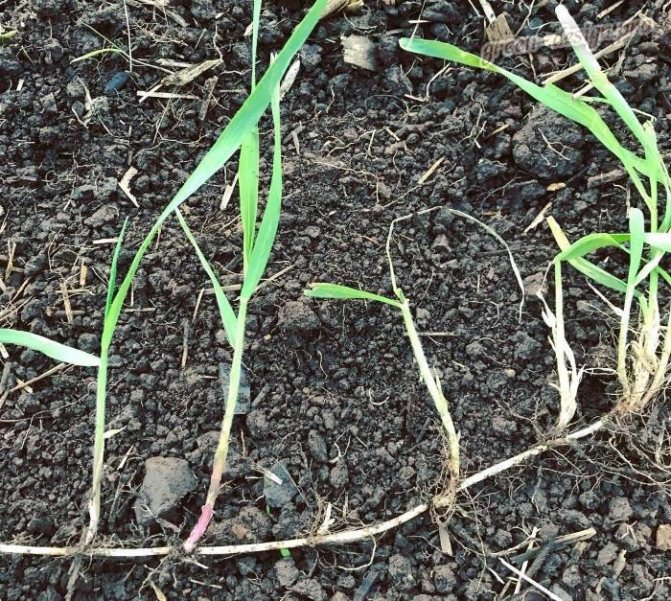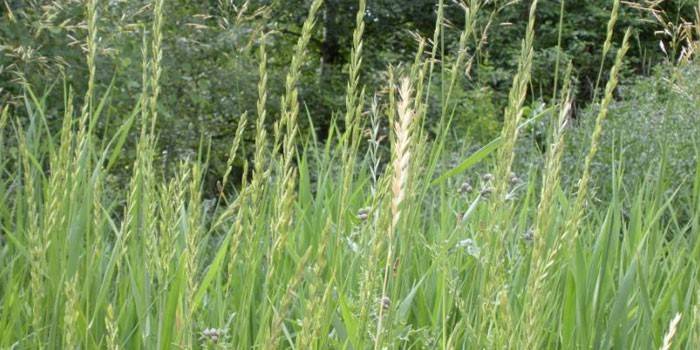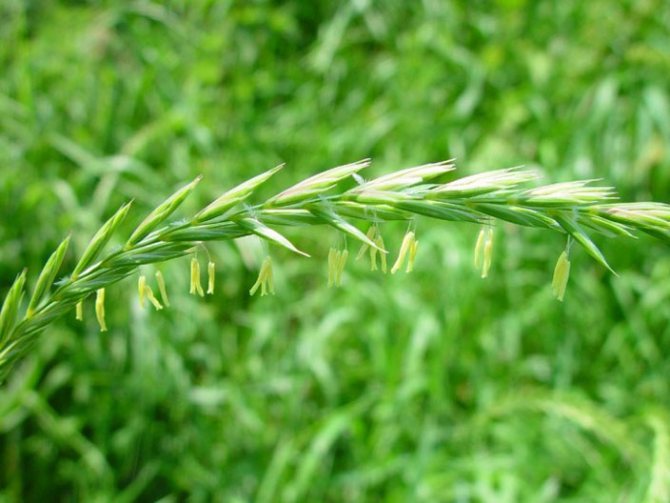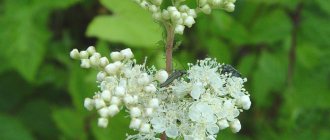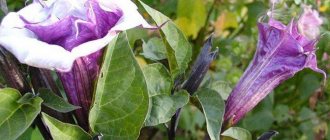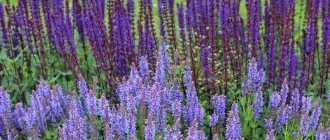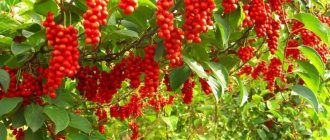Today we will take a closer look at the grass of wheatgrass, medicinal properties and contraindications, which recipes are recommended by herbalists in folk medicine for various diseases, what food additives contain wheatgrass, how to prepare an infusion, decoction, tea, wheatgrass juice, how to collect and store raw materials, you will find out how it looks grass, getting acquainted with a photo of a plant in different phases of development.

A malevolent pest - this was the name of creeping wheatgrass in my childhood, an herb for universal cleaning of the body and renewal of joints - this is how I know this unofficial medicinal plant now.
I will say one thing - I was not too lazy to remove the juicer from the pantry and passed a bunch of young stems with tender leaves for juice through it. There was not much of it there, but I liked it - it was not for nothing that all my animals overeat with its young shoots (the shoots grew at the site of the mowing).
And the feat of squeezing out the juice motivated me by the woman's feedback about this plant, that thanks to 30 ml of wheatgrass juice a day she got rid of deep wrinkles on her face, gray hair and joint pain. Wrinkles are actually smoothed out ... and I have no joint pains.
Therefore, I decided that I needed to get to know him - wheatgrass - to get to know better and find out its benefits and harms, find out why it is so useful, what is its chemical composition, how the wheatgrass root and leaves are used in folk medicine, the main recipes from them, and where else is used plant.
When in my childhood I did not want to collect wheatgrass roots from a freshly dug garden bed and spoke badly about it, my grandmother told me a legend about this plant.
Wheatgrass grass: how it looks, features and properties
The weed chooses soils well-groomed and saturated with fertilizers, loves vegetable gardens. He can live in mountainous terrain, but most of all prefers lowlands of the swampy type. Wheatgrass propagates in two ways: vegetatively - by dividing the rhizome, sexually - by spreading the seed. Each method is effective, wheatgrass grows over large areas at high speed. On 1 hectare, it can spread more than 250 million root shoots, which quickly germinate and multiply.
The flowers of the plant tend to pollinate, after which they form a new variety that is able to withstand harsh weather conditions. In emergency situations, the seeds close in scales and can be dormant for up to 12 years. After that, they can ascend again.
At a temperature of 4 ° C, rye grass begins to grow. When it reaches 25 ° C, it picks up its maximum reproduction rate. When more than 3 large leaves appear, the weed begins to actively spread roots.
Culture properties
Basically, creeping wheatgrass is a weed that prevents fruit crops from growing and developing. What wheatgrass weed looks like, everyone knows from childhood.
However, the weed is considered useful because it contains:
- essential oils;
- malic and lactic acid;
- fructose;
- starch;
- inulin;
- mineral components (Na, Ca, Zn, Mg, Fe, Mn, K);
- ascorbic acid;
- carotene.
Wheatgrass medicinal is widely used in folk medicine for many diseases.
- It copes well with cystitis and other inflammatory processes in the genitourinary system.
- Wheatgrass is used for diseases of the gallbladder and other diseases of the gastrointestinal tract, for example, colitis, enteritis, gastritis.
- Weed grass is also used as a laxative and normalizes the body's metabolism.
- The weed is indicated for anemia, colds and coughs.
- It is used during the treatment of tuberculosis.
- They make infusions for the treatment of skin diseases, osteochondrosis.
- They drink herbal infusions for the treatment and prevention of cancer.
Note! Animals are independently searching for this herb, as it helps them cope with gastrointestinal problems. By eating it, they cleanse the stomach and cope with fever. Dogs eat it with a lack of vitamins and minerals.
As for humans, people with allergic reactions should use wheatgrass with caution. It is not recommended to give it to children under 2 years of age. It is better to stop using the herb during pregnancy and lactation. There are no more contraindications. If the dosage is observed, creeping wheatgrass cannot harm.
Wheatgrass is harvested from August to September. There is another type of weed - grass that looks like wheatgrass, but you do not need to confuse it, so as not to harm the body. For medicinal infusions, only rhizomes should be selected, which are dried at 70 ° C or in the open air. After drying, the roots must be rubbed in the hands or in a special mortar. You can use the blank for no more than 3 years. After that, the raw material does not deteriorate, but loses its healing properties. It is best to store the herb in glass containers with a tightly sealed lid.
For your information! Wheatgrass creeping today is used in dishes, for example, salads or sauces. You can also cook jelly, porridge or replace a coffee drink from it.
For animals, this weed is a delicacy, so farmers often harvest it for eating cows, goats, pigs. Sometimes the grass is grown specifically to prepare hay for livestock.
The benefits and harms of the plant
Botany describes wheatgrass as an incredibly hardy weed, but traditional medicine speaks of the beneficial characteristics of the herb.
Top 7 useful properties of wheatgrass:
- Helps with arthritis and gout - reduces pain, suppresses inflammation.
- Cleans and strengthens blood vessels, the infusion of plant roots is used for a long course.
- They cope with colds, do not allow complications with ARVI to develop.
- Promotes the removal of excess fluid from the body.
- Helps with perspiration.
- Stimulates sputum excretion, copes with neglected cough.
- Helps eliminate the signs of anemia.
It is worth noting that all of the above properties really belong to the plant, but they will not be so pronounced that they can replace the classical treatment. Therefore, wheatgrass is used as an additional treatment, if there are no contraindications for it. You can also learn about the medicinal properties of wheatgrass from the video.
Contraindications to the use of wheatgrass:
- The first and foremost is the hypersensitivity to the composition of the plant. It is impossible to predict it, although if you have it in relation to the "relatives" of wheatgrass from the family of Grains, a negative reaction is likely.
- You can not use products based on this herb if you have been diagnosed with ulcers and erosion of the gastrointestinal tract.
- Do not use it for acute pancreatitis, which accompanies diarrhea. Do not use wheatgrass recipes if you are hypotonic.
All home remedies, as well as pharmaceutical preparations, are used strictly in prescribed dosages.
How to get rid of grass mechanically
If wheatgrass has appeared, and it is undesirable on the territory of the garden plot, then a plan to combat it should be thought out as early as possible. The most affordable and proven method is mechanical. It is applied in several stages.
- The plot is plowed in the autumn. It must be done twice: the first time to a depth of 12 cm, and the second time (after 7 days) to a depth of 20 cm.
- If the area is small, then you can dig out the roots by hand. You cannot use a shovel for digging, it can cut the roots, thereby spreading the wheatgrass even more. For this, a pitchfork will be an excellent attribute. The wheatgrass bush must be carefully dug up, shaken off the ground and taken out of the site.
- Weeding regularly.
- If the whole area is covered with wheatgrass, it is best to use a cultivator. They need to chop the grass and rhizomes so that new shoots with a small root system emerge. They can be easily removed.
Weed control preparations
Chemicals are prized among gardeners because of their speed. Their disposal efficiency reaches 95%. Creeping wheatgrass is afraid of cletodim, so you should purchase funds based on it.
The most popular remedies for worm-grass control.
- Roundup is considered a low-toxic and universal drug. It is sold in liquid form. The decay period in the ground takes up to 2 weeks.
- If you treat the site with Hurricane Forte, then all the weed grass will die in 10 days. No need to worry about fruit crops, it does not harm them. It is best to carry out the processing before planting, as well as after harvesting.
- Agrokiller is considered the most toxic, so it must be used with caution next to vegetable crops. You need to scatter the product before planting vegetables for 2-2.5 weeks.
- Glyphos is used both in autumn and spring. In addition to the detrimental effect on weeds, it also affects cultivated plants. Therefore, processing should be carried out 3 weeks before planting.
- The tornado pesticide is intended for a single application before planting for 14 days. Not toxic to humans.
Note! Currently, they began to produce preparations that do not affect the soil and future fruit crops. They act on the weed root system by fermentation. These include products such as radiance, baikal, revival and emix.
Before buying weed poison, you need to consider a few nuances. If you want to destroy all the vegetation on the site, then it is best to purchase solid preparations. If you need to exterminate a specific type of weed, then the remedy must be selective. Also among the pesticides are universal and cereals. The former are suitable for all types of weeds.
How to remove wheatgrass weed from the garden using green manure?
Often, siderat plants are used to combat annoying wheatgrass. This method of destroying weeds is the so-called organic cultivation. When sowing green manure on a land plot, its ecological state does not get worse, but on the contrary - after clearing of weeds, the soil improves. The most famous green manure plants are rapeseed, phacelia, buckwheat, lupine, clover, peas and rye.
Siderata are sown in shallow plowed soil about a month before planting the main crop or immediately after harvesting. After their growth, the root system of wheatgrass can no longer spread and is gradually forced out of the garden. Mowing and incorporating green manure into the soil contributes to soil aeration.
Folk remedies
Folk methods are also popular with gardeners.
- If several young sprouts of wheatgrass have appeared on the site, then a solution of soda and water will cope with them. They need to water the plant.
- Young shoots can be quickly burned out with a blowtorch.
- Another way to eliminate the weed is to prepare a solution of hot water and citric acid (for 1 liter, 3 tablespoons). Spray the plant with this mixture.
- Gardeners often use a vinegar solution. To do this, you need to take 4 liters of 15% vinegar, 0.5 tbsp. salt, 1 teaspoon of dishwashing detergent. Get up early in the morning and spray the plant after the dew has melted. It should be remembered that this method is temporary, it only affects the upper part of the grass.
After the entire area has been treated, preventive measures must be followed. There is no need to use foreign soil imported from other sites.It can contain millions of seeds or dormant roots of wheatgrass. If there is a compost pit or a heap in the country, then it is categorically impossible to put the remains of the weed in it in order to prevent the soil from re-clogging.
Thus, wheatgrass can both help in treatment and harm the garden. To grow it or not, each gardener decides for himself. If the herb is needed to treat ailments, then you should familiarize yourself with how to collect it correctly. If, on the contrary, it is unusable on the site, then it is recommended to use "chemistry" and folk remedies. In any case, the article will become a cheat sheet not only for a novice gardener!


Wheatgrass creeping is perceived primarily as a weed that actively occupies vegetable gardens. And yet it is a medicinal plant. Find wheatgrass close-up photo - it is worth remembering this perennial herb, because it is very valuable in composition. About what wheatgrass looks like, what is the use of the plant, and what is the potential harm, how to use it for food and for treatment, read on.
Chemical control methods
Using chemicals to combat wheatgrass is a quick and effective way to get rid of them. When weeds are treated with systemic chemicals, they spread throughout the plant and have a detrimental effect on it. When choosing a herbicide, it is necessary to be guided by the goal that is planned to be achieved - the complete destruction of plants in the selected area or selective.


If the task is to deal with plants on the path or between parts of the paving slabs, preference should be given to herbicides of continuous action. And in large areas used for growing garden crops, treatment should be carried out with selective drugs that destroy certain types of weeds.
Manufacturers offer a huge selection of chemicals to combat wheatgrass. The most common and effective ones are Hurricane Forte, Tornado, Roundup, Glyfos, Agrokiller, Fuzalid Forte, Ground.
Despite the fact that chemicals in the fight against wheatgrass have proven to be effective, it must be remembered that when weeds are removed in this way, living soil and its inhabitants can be irreparably damaged. Cultivated plants growing on a plot of such land will be under the influence of these substances for a long time.
Agronomists advise not to use herbicides on the same site more often than once every 3 years. When working with chemicals, you should always use respirators, goggles, heavy clothing and gloves, thanks to which the used products do not come into contact with the skin.
It is important to remember that getting rid of weeds, including wheatgrass, is possible only under the condition of systematic control. Occasionally destroyed harmful vegetation will not bring the desired results.
Description of the plant
It belongs to the wheatgrass family of Grains, it is considered a common perennial, which can be found everywhere. Throughout Europe and Asia, the weed grows on forest edges, glades, and mainly in meadows, fields, orchards. This plant has an impressive vitality: even a small part of the root is enough for the damaged grass to recover. And even the numerous chemicals directed to its destruction, wheatgrass quite successfully resists.
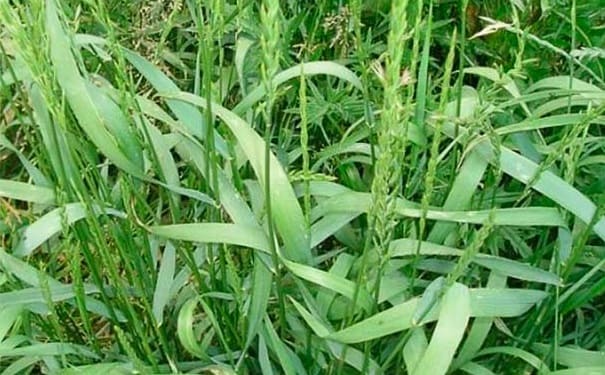

Even Avicenna in the "Canon of Medicine" described the plant, noting that its root and leaves have life-giving powers and therefore they should be used to heal fresh wounds. Ancient scientists noticed that plant components have powerful regenerative properties. Their modern counterparts have discovered that wheatgrass is rich in polysaccharides and saponins. The former enhance the protective properties of the body, the latter actively participate in the prevention and therapy of atherosclerosis.
Distribution and habitat
Wheatgrass creeping grows on wastelands, fallow lands, forest glades, along forest edges, along roads, in meadows, arable lands and vegetable gardens. It is difficult to eradicate due to the fact that the rhizome is long, creeping, knotty, and pieces of its roots do not die when cut and give new shoots. But outside the soil, wheatgrass rhizomes quickly dry out and die.
Prefers humus-rich, moist, loose sandy and boggy soils.
It is often found in nature. It is very common on the territory of Russia in the temperate zone. Also found in the temperate zone of Western Europe and other continents.
Gallery of what wheatgrass looks like
Plant height from 40 to 130 cm, it has very long, creeping, tenacious rhizomes. The grass has an erect stem, alternate flat leaves. The type of wheatgrass inflorescence is a complex ear. The flowers of the plant are small, faded green, collected in spikelets. The fruit is a caryopsis. Flowering occurs in all summer months.
The botanical description is interesting for a biologist, but summer residents do not feel any warm feelings for this grass. Except for herbalists and those who are fond of herbal medicine. For them, wheatgrass is creeping, the description of which says little about its usefulness, first of all, a medicinal plant. And you can not only get rid of it, but use it for therapeutic purposes.
Brief description and biological features, photo
Creeping wheatgrass is a monocotyledonous cereal with a long creeping rhizome and shoots. The foliage is flat, wide. Flowers gather in a dense and large ear. The grass blooms in May, June. The fruit is a caryopsis.
You can see what a whole plant looks like and its individual parts in the photo below.
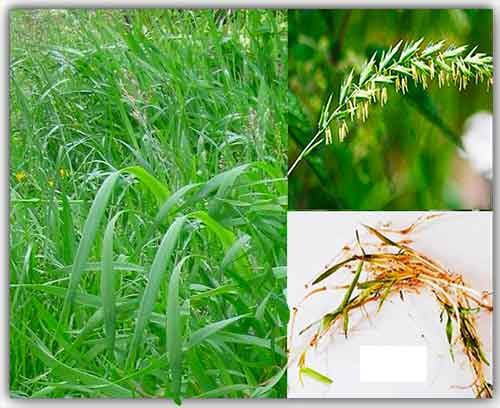

What the plant looks like during and after flowering, as well as how the leaves are attached, their location on the stem is shown in this photo:
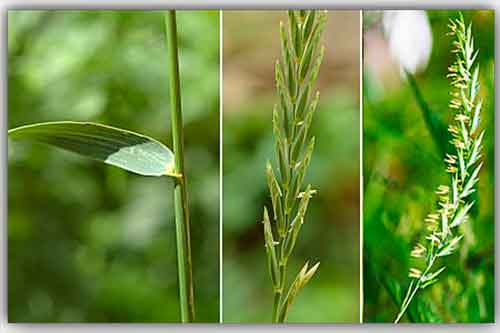

The photo below shows the stems and white rhizomes of a newly dug plant, a dense bush that forms stems and leaves in meadows in nature, as well as a diagram of the structure of wheatgrass: an ear and a rhizome.
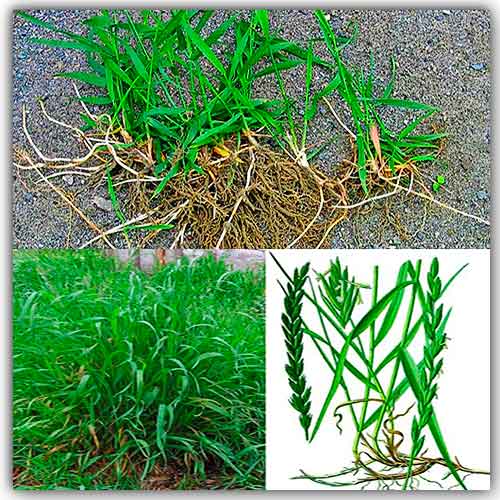

The next image is a species of wheatgrass spikelet at different ripening periods and its fruit is a caryopsis.


The photo shows the depth of the rhizome and the width of its branching.
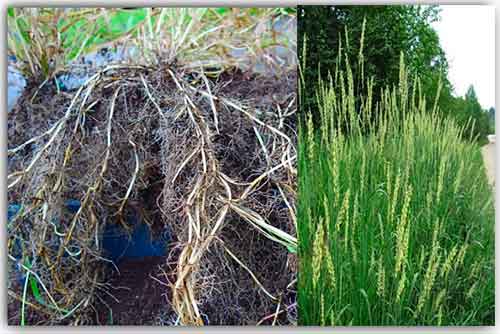

The people call the plant - root-grass, villager, worm - grass, dog grass, rye. Below is an incomplete list of the folk names of the plant.
Distributed everywhere, prefers loose, moist, well-fertilized soils. Grows in floodplains of rivers, fallow fields, sparse birch forests. It grows up to 120 cm in height, the rhizome spreads to several meters in length.
The biological feature of wheatgrass is that a high rate of reproduction and growth requires a lot of moisture. Differs in good competition for living space. It inhibits the growth and density of cultivated plants.
The wheatgrass root releases toxic substances into the soil, which cause the death of the growth of useful plants. The weed is effectively propagated by seeds and parts of the rhizome, which lie in the soil superficially.
Capable of fast germination. The shallow location of the roots and the absence of a dormant period in the buds and seeds contributes to both early spring seedlings and seedlings during the entire growing season.
Application
The roots of the plant can be eaten: the dried roots are broken into flour, and its value is equal to the value of the wheat mass. Wheatgrass flour can be used to bake bread. And if the roots are dried, then they are used as cereals, from which delicious cereals are made. Fresh roots can be added to soups, as well as herbs, as a seasoning for meat, vegetables, salads.
Roasting the creeping wheatgrass rhizomes creates a rich coffee drink. Of course, these recipes are not widespread, but it is worth taking a closer look at them. Herbalists assure that the use of wheatgrass in food helps the body to resist the development of cancer pathologies.Silicon in perennials allows zinc to be better absorbed, because wheatgrass helps fight herpes viruses, and can even stop hair graying.
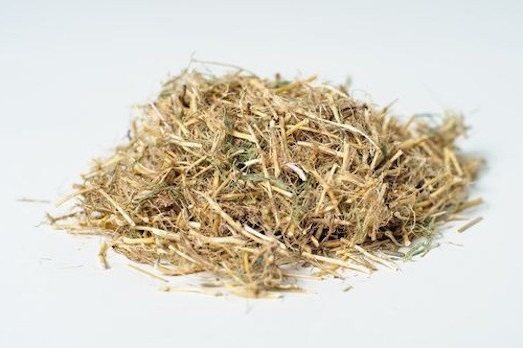

Wheatgrass root is used to make flour, the value of which is similar to wheat
Folk recipes for health improvement:
- If you boil 50 g of plant roots in 5 liters of water, this broth can then be added to the bath. Once the water is at a comfortable temperature, you can take a bath for 15 minutes. Such water procedures help to treat skin diseases, hemorrhoids, they relieve fatigue and increase vitality.
- 4 teaspoons of grated rhizomes need to be poured with a glass of boiling water. The tool is infused for 12 hours, then filtered. The raw materials that remain from the infusion, you need to pour 180 ml of boiling water, wrap the container with a warm towel, insist for 1 hour. After filtration, you need to mix 2 infusions, and the resulting composition is drunk 2-4 times a day, 80-100 ml. This remedy should help with rheumatism, as well as gout and aching joint pains.
- The stems together with the roots should be rinsed in running water, scalded, passed through a blender, diluted in equal parts. Next, squeeze the mixture through a dense natural fabric and boil for 3 minutes. It is prescribed to take the juice in 1-2 tablespoons three times a day. The juice can be stored in the refrigerator no longer than 2 days, then it becomes unusable. Juice treats colds, cough, anemia.
For the sake of objectivity, it is worth noting that the world has a rather polar attitude towards wheatgrass. Most doctors consider its effectiveness either unproven or weak. But, for example, in Switzerland, drugs based on perennials are used to treat endocrine diseases and pathologies of the respiratory tract. It is also used in the treatment of gout and joint diseases. German doctors point out that some of the properties of wheatgrass can be successfully used in the treatment of bronchitis.
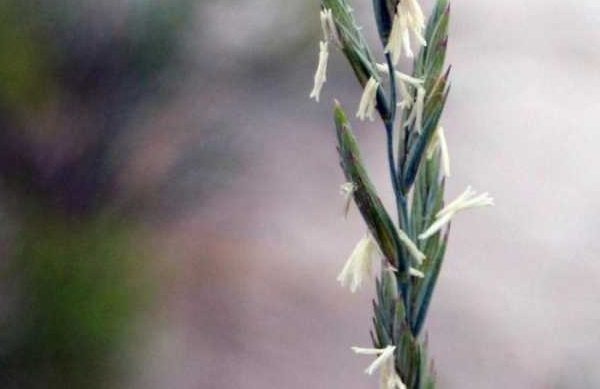

Inflorescence of creeping wheatgrass
Look at the photo of what wheatgrass looks like: you probably know this plant. Its roots can be prepared, dried, and used as an aid in the treatment of colds, hemorrhoids, anemia, and joint pain.
Do not give up on the classic treatments that evidence-based medicine offers, but if possible, consult with your doctor about the use of herbs - they can be a good addition to treatment or prophylactically improve health.
The author of the article is Katerina Ivanova: “Even while studying at the university, I was carried away by research work in the field of medical psychology. And for 15 years the topic of healthy lifestyles has been of interest to me both as a researcher and as a supporter of a healthy lifestyle. Herbal medicine, proper nutrition (but not diet!), Physical activity (exercise therapy, cardio training, fitness), taking care of psychological health, active rest - this is what I have in my life. "
In folk medicine, creeping wheatgrass is very popular, the medicinal properties of which, in the absence of medical contraindications, are useful for many diseases. This herbal remedy is ideal not only for men and women; even a small child can be treated with this alternative method. The medicinal properties of the herb extend to almost all areas of modern medicine, while ensuring the positive dynamics of the underlying ailment.
What is creeping wheatgrass
The perennial plant elytrigia repen of the Cereal family is the most famous representative of the Wheatgrass genus. The height of the stem can reach 150 cm, and the rhizomes lie at a depth of 15 cm. Spikelets are collected in a single spike, the number of flowers is up to 8 units. Leaves are bare, flat, elongated. Plant color in June - July, has several common names. Among those, the following are especially recognizable: dog grass, root grass, dandur, worm grass. The grass can propagate by seeds and vegetatively.
Wheatgrass in folk medicine
From rhizomes, seeds and leaves, you can prepare an aqueous decoction or alcohol tincture, and use such a medicine strictly according to the prescription. Also useful is the juice of creeping wheatgrass, which is prescribed in concentrated or diluted form for diathesis, arthritis and osteochondrosis. In addition, such an appointment is appropriate for scrofula, for skin rashes of various etiologies. Below are some effective recipes that use wheatgrass seeds or root as the main ingredient.
Grass
This folk remedy is intended to be taken orally or externally - it all depends on the medical indications and characteristics of the affected organism. For example, in case of gout, it is necessary to thoroughly rinse and dry the stems, and then grind them. Raw materials in the amount of 2 tbsp. l. pour 1 tbsp. boiling water, leave for 4 hours. Strain, pour into a glass container, take wheatgrass inside, 1 tbsp. l. three times a day.
With eczema, you can prepare medicinal baths, and for a medicinal decoction, 2 tbsp. l. steamed chopped dried herbs in 500 ml of boiling water. Insist, strain, cool, add to an incomplete bathroom with warm water at a temperature of 37 degrees. Such treatment procedures should be carried out for 20 minutes up to 3-4 times a week before the onset of the remission period.
Root
In case of radiation sickness, furunculosis, abscesses, barley, rosacea, it is recommended to use the rhizome of the herb, which is pre-washed, dried, chopped (you can pass it through a meat grinder). It is necessary to steam 30 g of the prepared raw material with 1 liter of water, boil over low heat for 5-7 minutes after boiling. Take half a glass three times a day for 3-4 weeks.
In case of kidney stones, kidney problems, it is required to rinse and dry the rhizomes in advance, grind through a meat grinder and dilute with water at a ratio of 1: 1. Boil the mixture for 3-5 minutes, insist, cool, store in a glass container. Take a decoction inside for 1-2 tsp. before meals for 3-4 weeks.
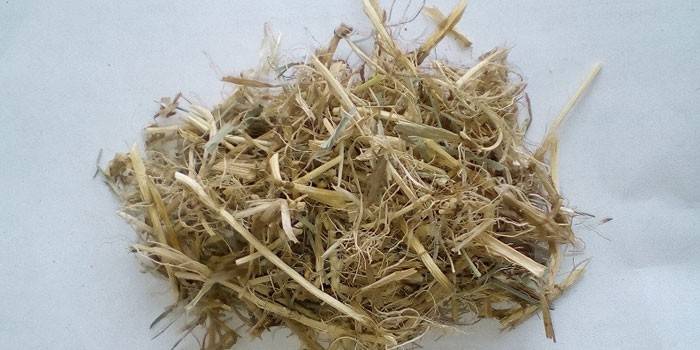

Seeds
For digestive problems, it is better to use seeds that are steamed in boiling water. At 1 st. l. dried raw materials account for 1 tbsp. liquids. The finished medicine must be drunk on an empty stomach, without drinking water. Eat only after 20-30 minutes. The course of treatment is until the complete disappearance of the alarming symptoms.
Prescriptions for various diseases
Collection 1. Pour 4 tablespoons of dry, finely chopped wheatgrass rhizomes with 5 cups of water, boil until the volume is reduced by a quarter. Take 1 tablespoon 4-5 times a day.
Collection 1. Horsetail herb - 1 part, birch leaf - 1 part, dandelion root - 1 part, wheatgrass rhizome - 1 part, soapwort root - 1 part, yarrow herb - 1 part, chokeberry fruits - 1 part, corn stigmas - 1 part. Pour one tablespoon of the mixture with a glass of boiling water and leave for 30 minutes. They are filtering. Take 1 / 3-1 / 2 glass 3 times a day after meals.
Gastritis colitis, metabolic disorder
Collection 1. Take 5 teaspoons of crushed wheatgrass rhizome and pour 1 glass of cold boiled water. Insist for 12 hours, strain, pour the remaining mass of rhizomes with 1 glass of boiling water, leave in a warm place for 1 hour, strain, mix both infusions. Take 1/2 cup 4 times daily before meals.
Collection 1. Pour 1 tablespoon of dry crushed wheatgrass rhizomes creeping 0.5 liters of boiling water. Boil for 15 minutes, leave, wrapped, 2 hours, drain. Take 1/2 cup 3-4 times daily before meals.
Collection 1. Wheatgrass rhizome - 1 part, viburnum bark - 1 part, buckthorn bark - 1 part. One tablespoon of the mixture is poured overnight in a thermos with 1 glass of boiling water. They are filtering. A glass of infusion is drunk in 1 day in sips with dysmenorrhea.
Collection 1. Pour 5 tablespoons of chopped wheatgrass rhizomes with 0.5 liters of boiling water, simmer for 15 minutes. Cool, strain and do enemas for chronic constipation.
Collection 1.Walnut leaf - 1 part, steel root - 1 part, wheatgrass rhizome - 2 parts, juniper fruits - 2 parts. Two tablespoons of the mixture are poured overnight in a thermos with 2 cups of boiling water. They are filtering. Take 1 glass of infusion in the morning and in the evening.
Collection 1. Burdock root - 3 parts, wheatgrass rhizome - 2 parts, violet grass - 3 parts, Veronica grass - 2 parts. One tablespoon of the mixture is poured with 1 glass of boiling water, boiled in a water bath for 10 minutes, insisted for 30 minutes. They are filtering. Take half a glass 4-5 times a day 30-45 minutes after meals with gout.
Collection 1. Boil in 1 glass of milk for 5 minutes 2 tablespoons of dried wheatgrass roots (fresh - 1 tablespoon), cool slightly and drink at 1 reception. Take up to 3 glasses a day. The same broth helps with other intractable diseases.
Collection 2. Wormwood herb - 4 parts, shepherd's purse herb - 3 parts, highlander grass - 2 parts, watch leaf - 2 parts, snake mountain rhizome - 2 parts, cinquefoil rhizome - 2 parts, wheatgrass rhizome - 3 parts. 2-3 tablespoons of the mixture are poured overnight in a thermos of 0.5 liters of boiling water. They are filtering. Take during the day in 3-4 doses for hemoptysis, pulmonary hemorrhage, pulmonary tuberculosis.
Collection 1. Take 20 g of wheatgrass rhizomes, pour 1.5 cups of boiling water. Insist for several hours, strain. Take 1 glass 3 times a day. The course of treatment is 1 month.
Cystitis, urolithiasis
Collection 1. Pour 2 tablespoons of chopped wheatgrass rhizomes with 1 glass of water, boil for 10 minutes in a sealed container, leave for 4 hours, drain. Take 1 tablespoon 3 times a day.
Collection 2. Preparation of the infusion. 25-30 g of crushed rhizomes are poured overnight with 2 cups of boiling water (in a thermos). They are filtering. Take 1 tablespoon 4-5 times a day for kidney stones, urinary or gall bladder
Peptic ulcer and duodenal ulcer
Collection 1. Fennel fruits - 1 part, marshmallow root - 1 part, wheatgrass rhizome - 1 part, chamomile flowers - 1 part, licorice root - 1 part, yarrow herb - 2 parts. One tablespoon of the mixture is poured with 1 glass of boiling water, insisted for 20 minutes. They are filtering. Take half a glass 2-3 times a day before meals.
Testimonials
Inna, 35 years old I took creeping wheatgrass as a decoction for inflammation of the bladder, when I ran to the toilet every 20 minutes. The medicine is easy to prepare, even easier to ingest. There are no contraindications, so you can use the medicinal properties of the plant, the main thing is to complete the full course. A friend of a child with rickets prepared such a decoction.
Svetlana, 41 years old In case of oncological diseases, this is an auxiliary treatment that helps to remove the products of intoxication from the affected organism. It is impossible for them to recover, but relief definitely comes. I prepared a decoction for my father from the rhizome of creeping wheatgrass, it became easier, albeit temporarily. Classic recipe - 1 tbsp. l. in a glass of boiling water.
Anna, 46 years old You can use creeping wheatgrass for rheumatism to relieve acute pain. An anesthetic can be prepared from the broth, but take it in full - 2-3 weeks. Creeping wheatgrass helps, but temporarily. I tried this herbal remedy on myself and recommend it to everyone with the same problem.
Maria, 26 years old For skin rashes I use creeping wheatgrass. I prepare a concentrated juice from the root and stems, after which I dilute it with water and smear the problem areas on the face. I perform such procedures with creeping wheatgrass regularly, changes on my face. As soon as I stop using this medicine, the unpleasant skin rash appears again. It is necessary to repeat the treatment.


